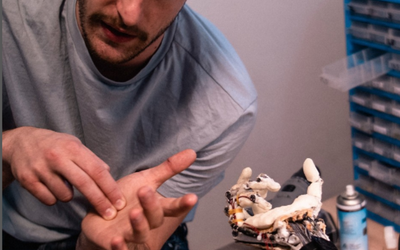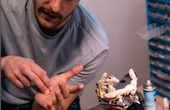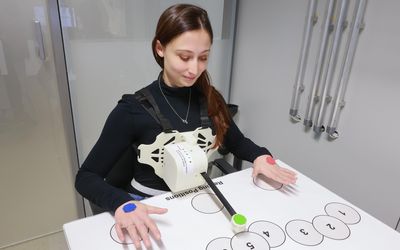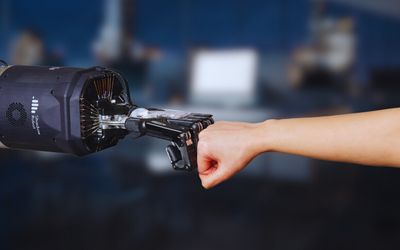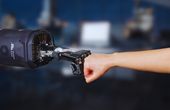A 3D-Printable Biomimetic Anthropomorphic Robotic Hand
The biomimetic anthropomorphic hand is a robotic interpretation of a human hand.
Technical Specifications
| Net Weight | 942 |
| 3D Printing Technique | Fused Deposition Modelling (FDM)) |
| Actuation | MX-12W Dynamixel servo x 9 and AX-12A Dynamixel servo x 1 |
| 3D Printing Material | highly resilient silicone rubber (ligaments) Spectra strings w/ 200N yield strength (Flexor tendons) |
| Printing time | 02 hours |
Overview
3D Printing of Anthropomorphic Robotic Hand
The Anthropomorphic Robotic Hand can be 3D printed in approximately two hours. This cutting-edge robotic hand design utilizes several manufacturing technologies.
Firstly, the hand's bones are captured using MRI or laser scanner to match the exact shape. Secondly, 3D printing considers every possible surface feature detail to print joint shapes and tendon insertion points. For soft tissues, the anthropomorphic robotic hand features compliant silicone rubbers that match the properties of the human skin.
What is an Anthropomorphic Robotic Hand?
Also known as the biomimetic hand, the anthropomorphic hand is a robotic device that can sense and replicate the movement of a human hand. Depending on the technologies, materials, and controlling devices, the biomimetic hand can mimic several hand postures and movements.
More futuristic designs based on in-depth research on hand taxonomy can deliver a higher degree of precision regarding hand postures, fingers, wrist movements, etc. This, in turn, gives this device the ability to hold, grasp, and manipulate objects that only a human hand can perform.
The Challenges in a Design of Anthropomorphic Robotic Hand
The main challenge is understanding how to reach the highest precision to mimic the natural hand. There are two main factors in attaining such an accuracy.
Firstly, most of the previous robotic or bionic hands couldn't replicate the movements of the natural hand because of the need for more data for the engineers. It is essential to understand the biomechanics of the natural hand's dexterity. Secondly, conventional designing tools may not always be enough to provide such a high degree of precision.
How is the Anthropomorphic Robotic Hand Different from Previous Biomimetic Hands?
The manufacturers of this particular Anthropomorphic Robotic Hand conducted in-depth research about the biomechanics and dexterity of the human hand. Further experimentation helped identify the fingertips' workspaces to create a fool-proof design.
This, in turn, helped design the robotic hand's building blocks with the right type of materials. Similarly, the choice of servo motors and their controls have been determined based on their findings.
The essential components of the robotic hand include artificial joint capsules, laser-cut extensor hood, elastic pulleys, crocheted ligaments, and tendons. Another factor that makes this robotic hand a viable solution is that these components can be 3D printed, hence more practical than traditional models.
Applications
The anthropomorphic robotic hand can be teleoperated to mimic a variety of natural hand movements and postures. This ability enables the robotic hand to perform tasks, from picking and grasping objects to manipulating them. This tendency makes this robotic tool helpful in various sectors, such as research and development, surgery, inspections, and other areas.
This robotic hand is highly beneficial in robotics and tissue engineering. Robotics experts can utilize the biomimetic features of this hand to perform telemanipulation. The anthropomorphic robotic hand offers valuable data for high-precision limb regeneration in tissue engineering.



